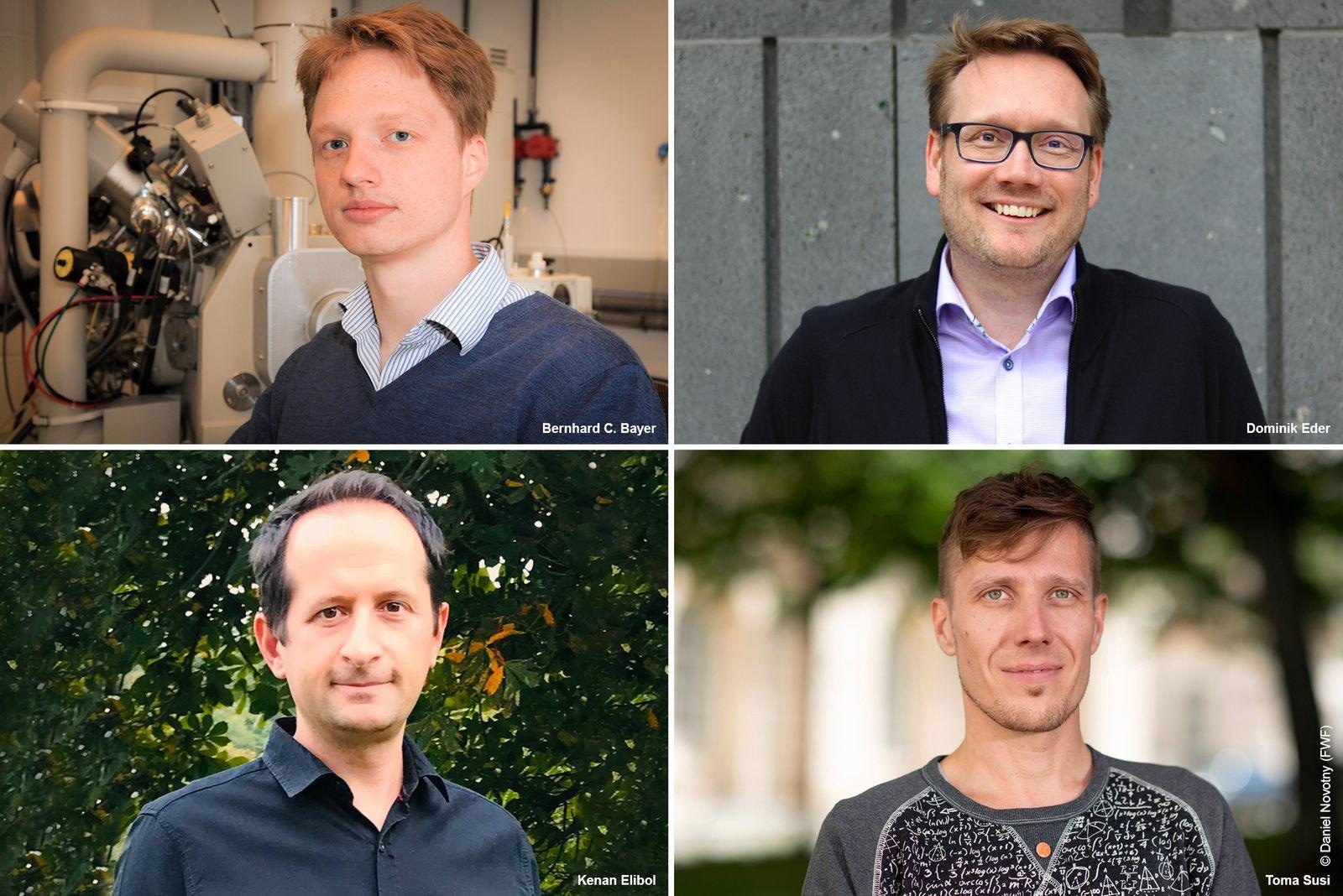Reviewed by Alex SmithSep 1 2021
An old saying goes “never change a running system.” However, novel techniques can be much superior to former ones. Until today, chemical reactions are majorly accelerated by catalytic materials that constitute several hundreds of atoms; however, employing single atoms can offer a new strategy for catalysis.
 From top left: Bernhard C. Bayer (TU Wien), Dominik Eder (TU Wien), Kenan Elibol (University of Vienna and Trinity College Dublin), and Toma Susi (University of Vienna). Image Credit: Vienna University of Technology.
From top left: Bernhard C. Bayer (TU Wien), Dominik Eder (TU Wien), Kenan Elibol (University of Vienna and Trinity College Dublin), and Toma Susi (University of Vienna). Image Credit: Vienna University of Technology.
A group of international researchers guided by the Vienna University of Technology (TU Wien), Austria, created a novel process for anchoring individual atoms in a stable and controlled manner on surfaces. This is a vital step for single-atom catalysis. The scientists associated with Bernhard C. Bayer published the new process in the scientific journal ACS Nano.
Single Atoms to Replace Nanoparticles
Modern catalysts contain nanoparticles and, therefore, are very small. Yet, when taking their size into account on the atomic scale, they still contain hundreds of atoms, far bigger than single-atom catalysts.
The possibility of accelerating chemical reactions with single atoms would unlock new opportunities for catalysis. Single-atom catalysis can be more energy-efficient and sustainable, and it can also be more selective and realize a greater turnover than conventional processes.
In the new process, silicon atoms function as “anchors” for single metal atoms. Silicon atoms frequently occur as an impurity in the carbon support materials. The silicon atoms are now bound to the indium atoms, which serve as single-atom catalysts.
The indium atoms bind selectively to the silicon anchors in the carbon crystal lattice. Thereby the individual indium atoms remain stable and anchored at their positions and do not clump together.
Bernhard C. Bayer, Research Lead, Institute for Materials Chemistry, Vienna University of Technology
“What makes the new technology particularly exciting is that the indium atoms are anchored in a self-assembled fashion if the reaction conditions are right. This makes the process potentially scalable,” says Kenan Elibol, first author of the study, from the University of Vienna and Trinity College Dublin.
The technique encountered challenges that the scientists successfully faced. Specifically, the deposition of individual atoms on solid support surfaces is tough. This is because single atoms generally move away rapidly from their locations and cluster together to form bigger particles. The formation of such bigger particles nullifies the advantages of single-atom catalysis.
Further Tests to Follow
A high-resolution electron microscope at the University of Vienna was used by the scientists to observe the processes of silicon-anchoring of the indium single atoms.
We were able to demonstrate, that the anchoring of the indium atoms depends on how the silicon anchors are bound into the carbon crystal lattice.
Toma Susi, University of Vienna
Susi further deciphered the anchor structures by modern computational methods. “Such controlled and room-temperature-stable anchoring of individual atoms on solid surfaces has not been reported yet and opens up exciting perspectives for catalytic applications in the fields of energy and environment,” remarks Dominik Eder from the TU Wien and an expert in catalysis.
The researchers intend to further experiment on this so that the new process can also be employed industrially.
The single atoms placed with the new method are now to be tested in detail as catalysts for various chemical reactions.
Bernhard C. Bayer, Institute for Materials Chemistry, Vienna University of Technology
The study was supported by the Austrian Research Promotion Agency (FFG) under project 860382-VISION and by the European Research Council (ERC) as part of the European Union’s Horizon 2020 research and innovation program (756277-ATMEN).
Journal Reference:
Elibol, K., et al. (2021) Single Indium Atoms and Few-Atom Indium Clusters Anchored onto Graphene via Silicon Heteroatoms. ACS Nano. doi.org/10.1021/acsnano.1c03535.